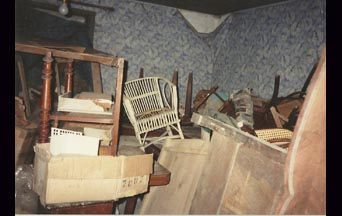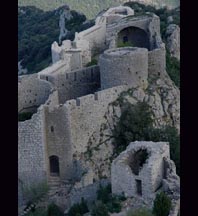
Adobe PDF File eBook Ordered From This Website Will Be Delivered Within 24-48 Hours from your confirmed order as we manually process each order. Thank you for your understanding.
AVAILABLE FOR SALE


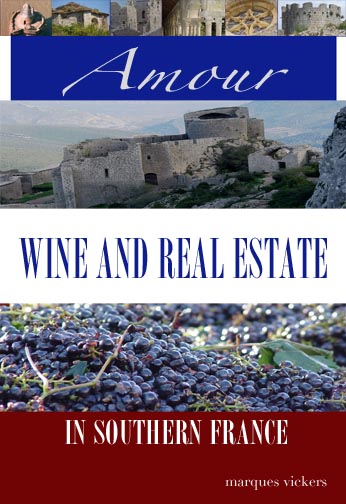
“AMOUR, WINE and REAL ESTATE in SOUTHERN FRANCE"
“Amour, Wine and Real Estate in Southern France” is California artist Marques Vickers’ memoir and mediation on five years of his passionate pursuit of la belle vie in France’s Languedoc rustic refuge. Vickers’ 45 evocative and original vignettes illuminate the enchantment behind southern French culture and village life.
His insider’s profiles into the region’s history, eccentricities and charm become an indispensable guide for the visitor wishing to lift the veil behind French mystique. For expatriates wishing to integrate seamlessly, his insights bridge the divide of nationality. His diverse and humorous essays become as delicately layered as the alchemic blending of fine Rhone Valley style wines. The edition offers practical advice on the realities of investing and renovating stone village properties with purchasing and resale strategies. Commentary is abundantly seasoned regarding the often confounding and intruding French bureaucracy on matters of immigration, health care and regional wine classifications.
“Amour, Wine and Real Estate” is a gourmet indulgence as flavorful and aromatic as the diverse natural herbs fronting limestone caged mountain ranges crowned by mediaeval castle ruins. France’s Languedoc region boasts the world’s largest wine acreage, pristine and vacant white sand Mediterranean beaches and internationally renowned cuisine including foie gras, cassoulet, duck specialties, pastis and varied fresh seafood delicacies from the spawning waters. The savage regional winds, climate and landscape extremes stimulate a beauty that has both haunted and inspired artists such as Salvador Dali, Pablo Picasso and Henri Matisse.
The writings escort you into the cloistered halls of a seasonal truffle auction, adjacent regional caverns boasting scrawled 10,000-year-old drawings and 400 year-old graffiti and the remnant legacy of the Cathar religion that barely escaped total annihilation.
Savor this gourmet delicacy at your favorite patisserie accompanied by a dark roasted espresso and chocolate pastry. “Amour, Wine and Real Estate in Southern France” is your travel companion to experience a captivating adventure from the inside.
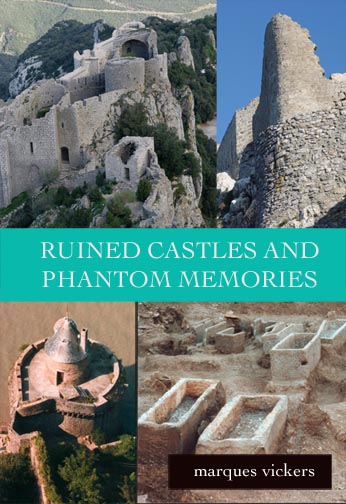
"RUINED CASTLES AND PHANTOM MEMORIES"
“Ruined Castles and Phantom Memories” is a pictorial edition of artist Marques Vickers photography featuring the remnants and remains of several Middle Age castles in southern France within the Languedoc region.
Each image frames the ruined monuments and elevated structures of 12th century France occupied by members of the once vibrant Cathar movement. Desolate and foreboding, these staggering monoliths bear the sole testimony of the Cathar race, effectively exterminated in the 14th century by the Catholic Church during the Albigensian Crusades.
The finely crafted masonry and vaulted remaining pillars cast expansive shadows across the soaring landscape. Time brakes to a halt enabling the viewer to understand the allure of simplistic elegance and majesty.
The principal fortresses photographed include the Cathar Castles of Peyrepertuse, Queribus and Chateau de Thermes and the Abbey of Saint Hilary. Vickers poetry accompanies this memorable survey, which visually examines the ravages of time, warfare and neglect.
Peyrepertuse
At the time of the Albigensian Crusade, Peyrepertuse was the fief of Guillaume de Peyrepertuse who, not wanting to submit, was excommunicated in 1224. He did finally submit after the failure of the siege of Carcassonne, and the castle became a French possession in 1240. IN 1242, Saint-Louis decided to reinforce it and add a second part, the Sant Jordi dungeon, located higher up on the ridge.
The situation in the region was unclear until the signing of the Treaty of Corbeil in 1258, which liberated Catalonia and Languedoc. It also fixed the border as just south of Peyrepertuse Castle. Like its neighbors, the castles of Puilaurens and Queribus, Peyrepertuse was one of the royal fortresses which was reconstructed at the end of the 13th century to defend the border against the kingdom of Aragon and then Spain until the 17th century.
In 1355, the castle was restored to its defensive state and Henri de Transtamare, pretender to the Castillian throne, routed at Navarette, was authorized by the king of France Charles V to take refuge there. In 1542, Jean de Graves, lord of Sérignan, seized the castle in the name of the Reformation, but was captured and executed.
The castle was decommissioned as a border point with the Treaty of the Pyrenees in 1659 having lost its strategic interest. Although the citadel was a lot less valuable after the annexation of Roussillon in 1658, a small garrison commanded by a junior officer was maintained until the French Revolution, during which it was abandoned.
Queribus
Queribus is one of the Five Sons of Carcassonne, along with Aguilar, Peyrepertuse, Termes and Puilaurens: five castles strategically placed to defend the French border against the Spanish, until the border was moved in 1659.
It is sometimes regarded as the last Cathar stronghold. After the fall of Montségur in 1244 surviving Cathars gathered together in another mountaintop stronghold on the border of Aragon.
In 1255, a French army was dispatched to deal with these remaining Cathars, but they slipped away without a fight, probably to Aragon or Piedmont - both regions where Cathar beliefs were still common,
Chateau de Thermes
Built on a promontory, defended on three sides by formidable deep ravines, the crumbling ruins of the castle cover an area of 16 000m≤. Held by the Cathar heretic Ramon (Raymond) de Termes, the castle only fell to Simon de Montfort after a siege lasting four months, from August to November 1210, the hardest siege of the first period of the Albigensian Crusade. Following an exceptionally dry summer and autumn, the empty water tanks led Raymond to offer surrender.
However, as the crusaders advanced to possess the castle, they were met with a hail of arrows. A heavy storm overnight had replenished the cisterns and the defenders were able to hold out a little longer. Later, weakened from dysentery, and exposed to the fire of numbers of siege weapons, the garrison attempted unsuccessfully to creep out at night. The alarm was raised, the fugitives caught and killed, and Raymond surrendered the castle. After de Montfort's death, Raymond regained possession of the castle but was soon forced to give it up again, this time to the King of France.
Rebuilt in the 13th century as a royal garrison, the castle was one of the "sons of Carcassonne" (five castles defending the border with Aragon and later Spain). When the border moved further south in the 17th century, the castle lost its function. It was taken over by a band of brigands who used it as a base from which to terrorise and pillage the surrounding country. To stop this, it was demolished by royal decree - a master mason from Limoux spent 1653 and 1654 blowing up the walls with gunpowder and reducing them to piles of rubble.
St. Hilary Abbey
St. Hilary Abbey is a medieval Benedictine monastery in a small village south of Carcassonne. It has a lovely cloister and an important work of Romanesque art inside the church: the sarcophagus of St. Sernin by the Master of Cabestany.
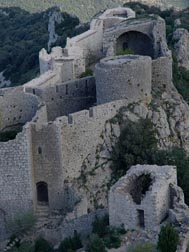
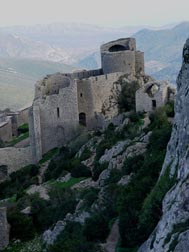
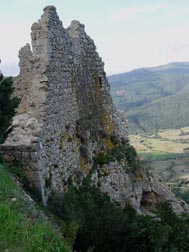
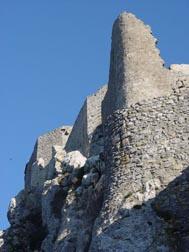
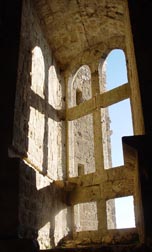
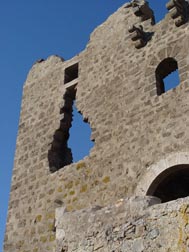
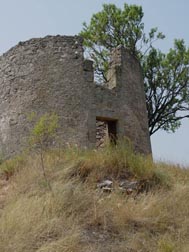

Marquis Publishing is a publisher of paperback and electronic books.
MARQUIS PUBLISHING
California, USA
1 (707) 712-8062
marques@artsinamerica.com


